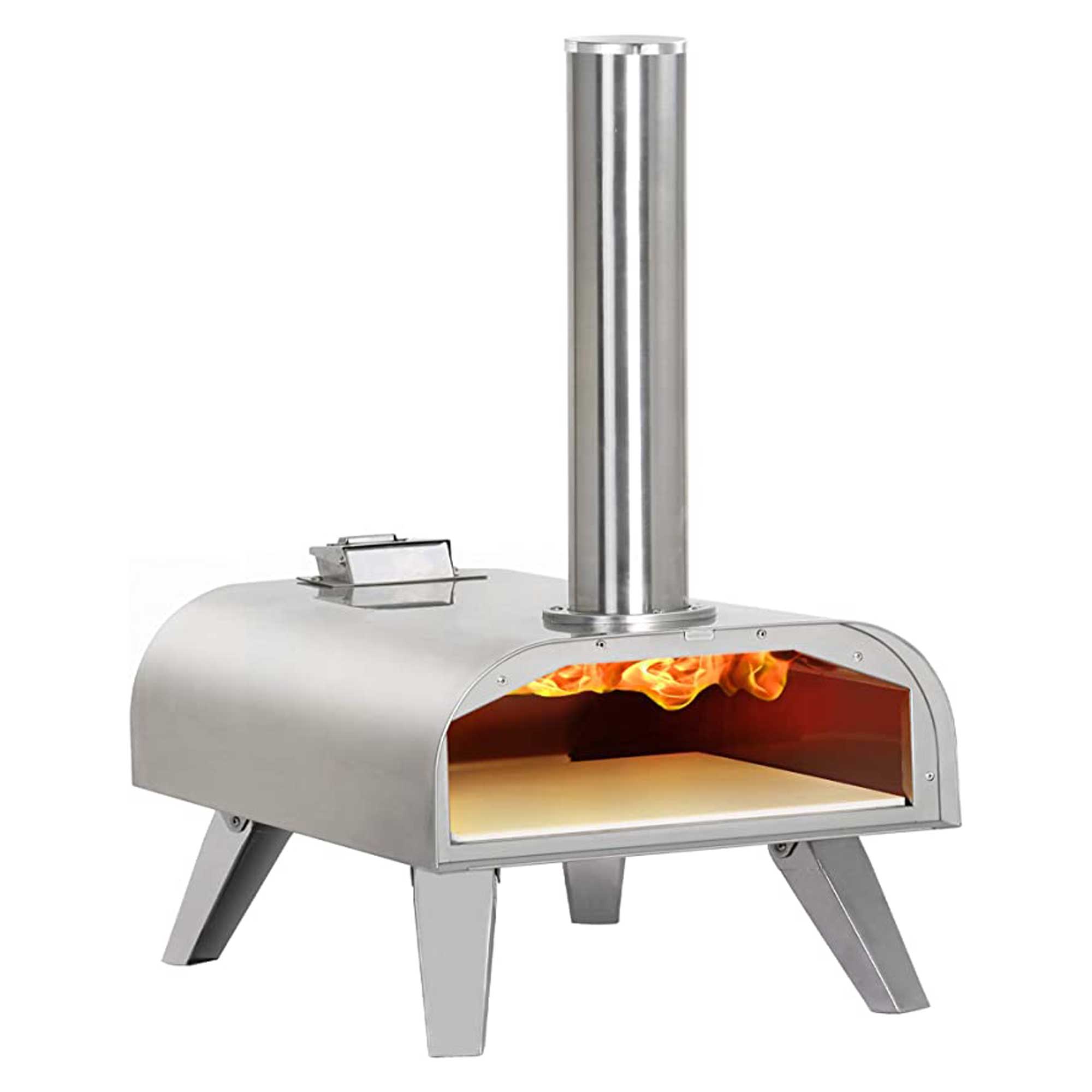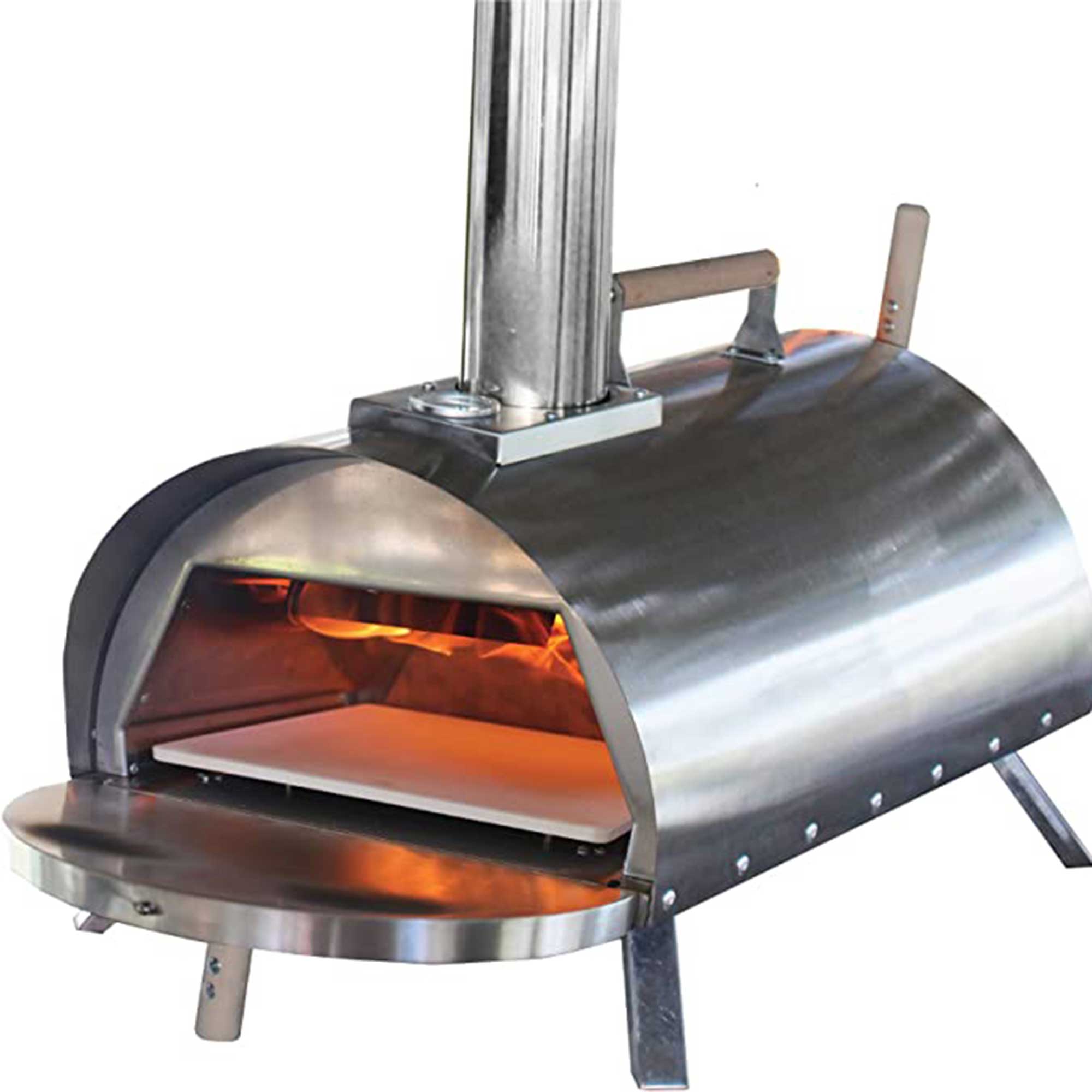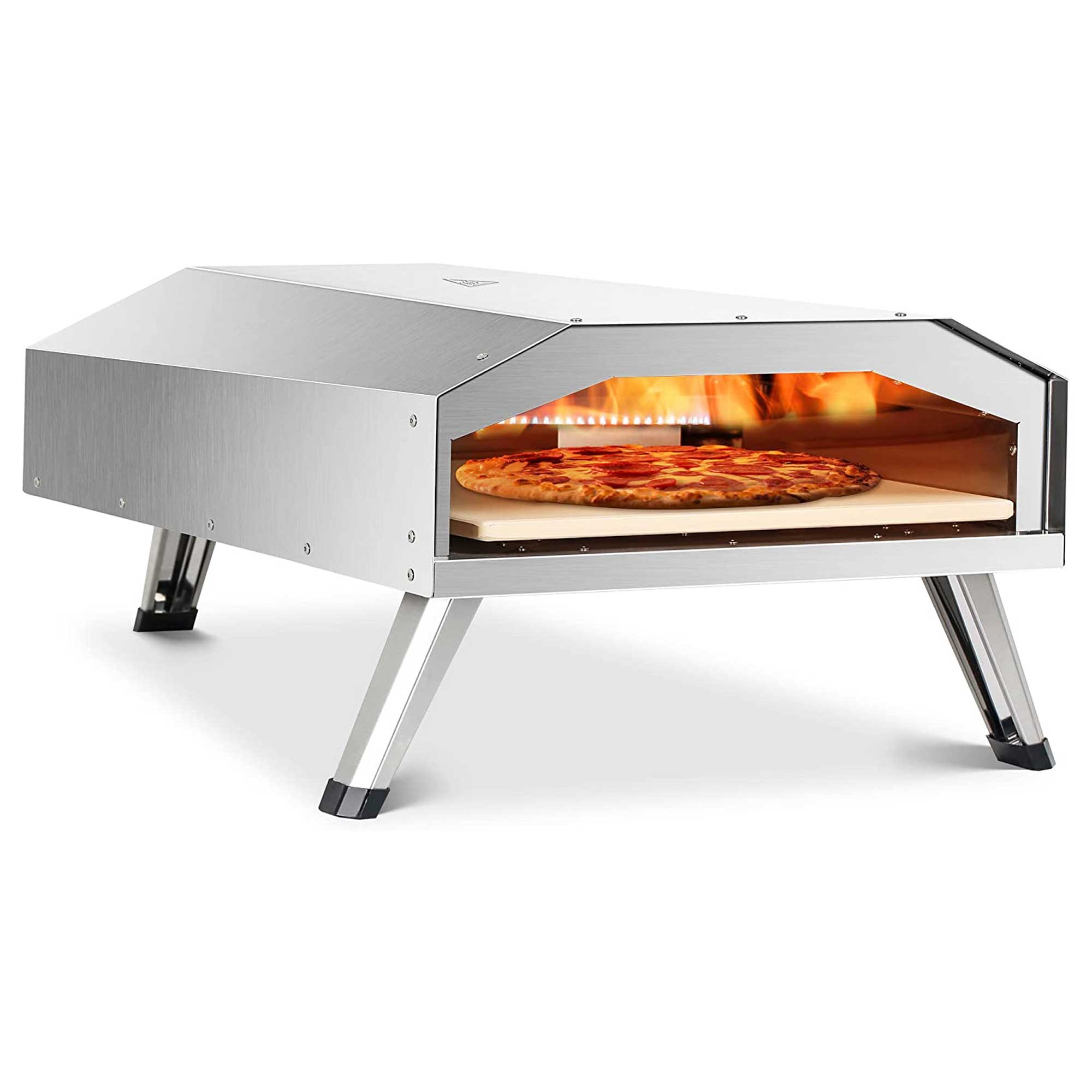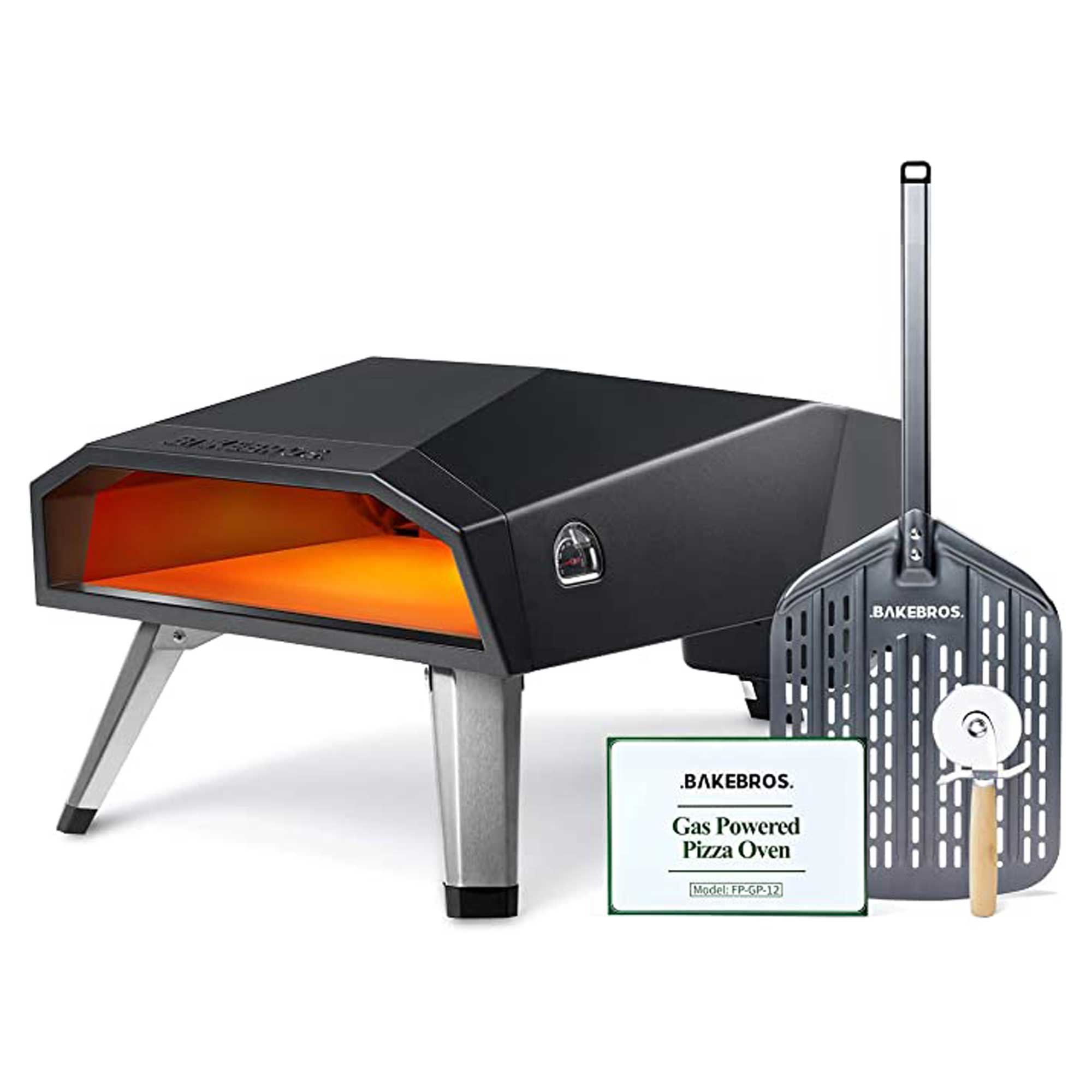Gas vs wood-fired pizza ovens: top tips to help you choose
Can't decide between gas vs wood-fired pizza ovens? With help from the experts, we round up the pros and cons of both
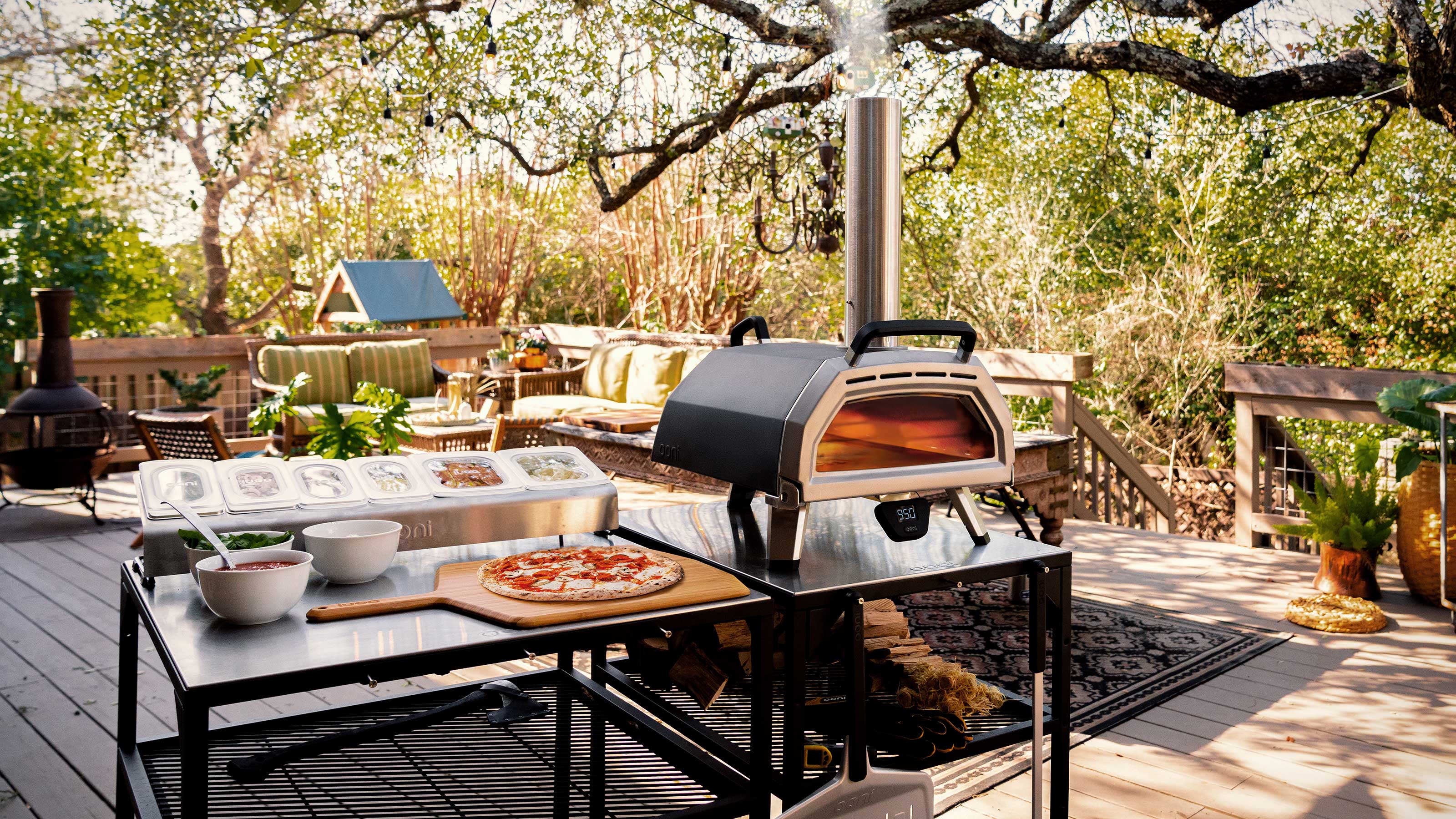

Gas vs wood-fired pizza ovens – which is best for you? Pizza ovens are the new must-have backyard feature if you love to entertain outdoors. And, before you make the investment, you'll need to make some decisions. These include how much you'd like to spend, and the size and style you want, but one of the most important factors of all is the type of fuel you want to use. Once you've decided on this, choosing between the best pizza ovens becomes much easier.
'There are a few considerations when deciding between a wood-fired pizza oven and a gas-fired pizza oven, so it helps to know the advantages and disadvantages of each,' says Pam Wiselogel of Patio & Pizza Outdoor Furnishings.
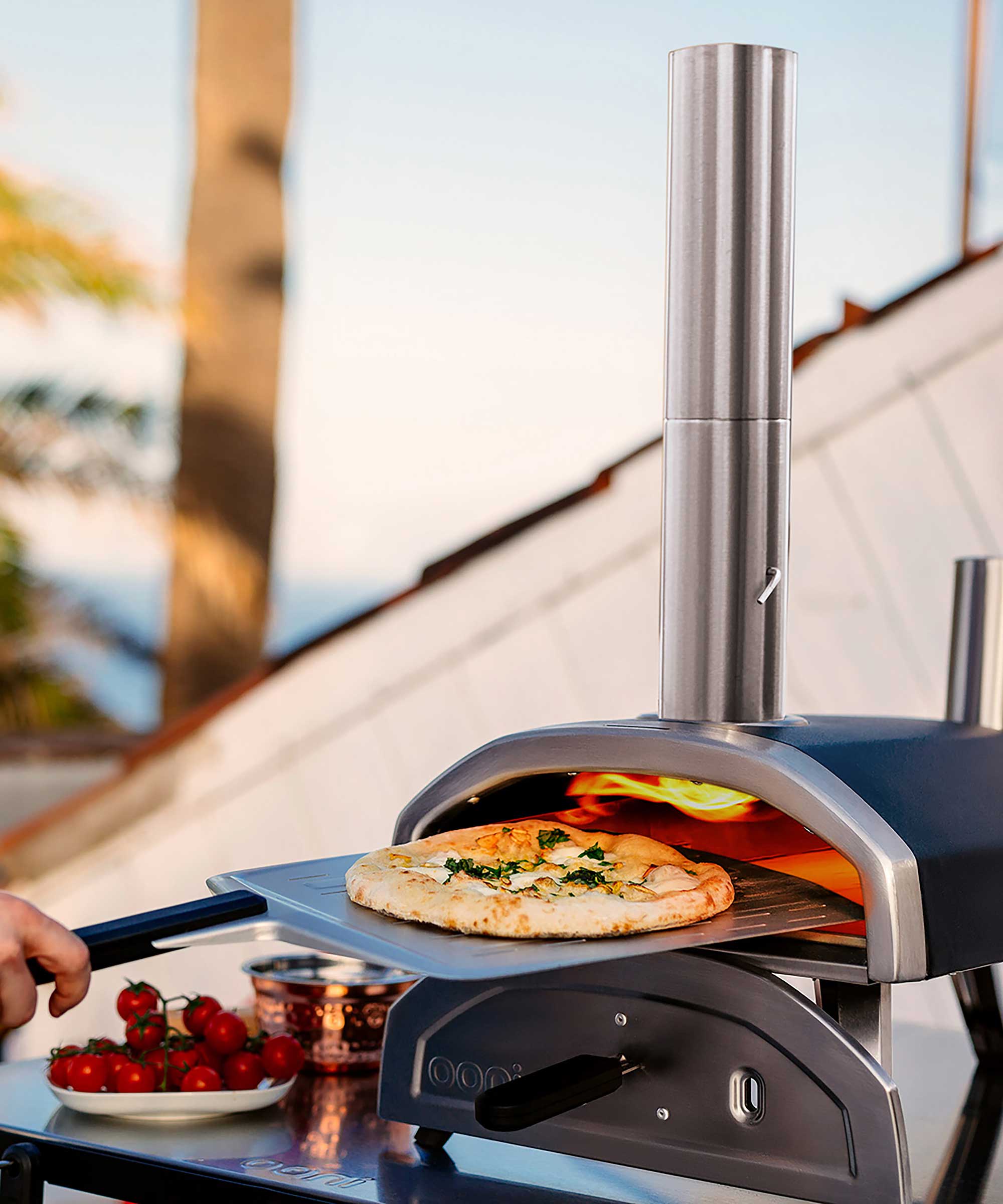
What are the pros and cons of wood-fired pizza ovens?
Thinking of keeping it traditional by using a wood-fuelled pizza oven? Here are the things to consider before you make your final decision.
Benefits of wood-fired pizza ovens
As noted by the experts at Ooni, cooking in a wood-fired pizza oven has a much more traditional feel. For many alfresco chefs, the smell of burning wood and the hands-on experience of working with fire and adjusting vents can't be beaten. It's ideal if you're looking to create an authentic Italian experience in your backyard.
Some say the flavor is better, too, as cooking over wood gives the food a delicious smokiness. This extends beyond making pizzas – don't forget, there are lots of other things you can cook in a pizza oven. As Paul Sidoriak of GrillingMontana.com points out, a benefit of wood-fired pizza ovens is they can impart some flavor at lower temperatures to steaks, roasts, fish, and other baked goods.
What's more, you can change the type of wood used in the oven and get different flavors on the pizza, says Shrey from CounterTopPizzaOven.com.
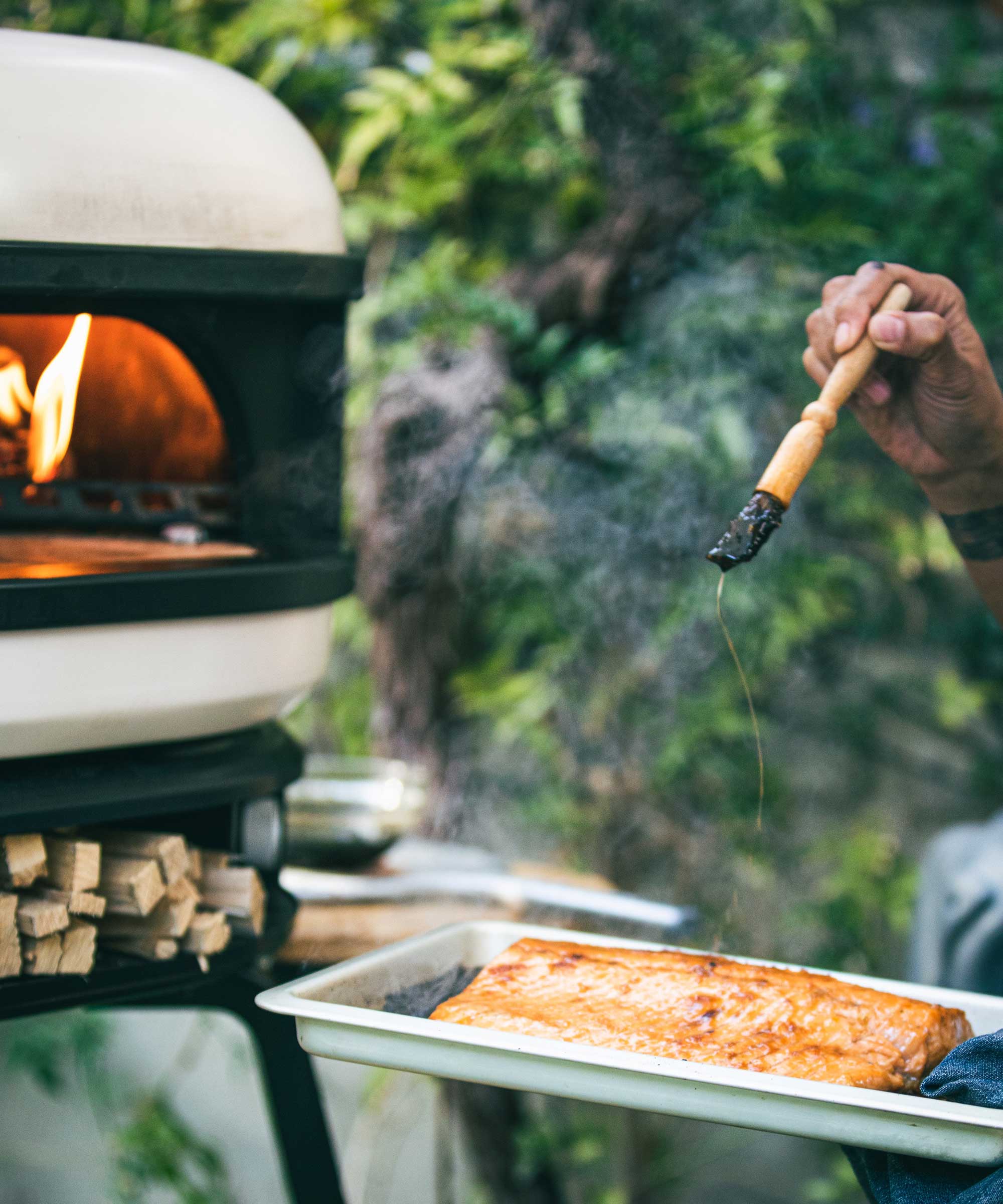
Cooking in the Gozney Dome
Drawbacks of wood-fired pizza ovens
It can take a bit of practice to learn how to use a wood-fired pizza oven and get your culinary creations just right, as Paul explains. 'There is a learning curve for fire and temperature management,' he says. 'It’s not as simple to adjust as a gas oven.'
Pam agrees: 'For beginners, it can be tricky to get the right temperature in a wood pizza oven; if it's too hot, your pizza won't cook evenly, while too low a temperature will slow down the cooking time.'
There's also the matter of fuel. 'Pizza oven wood is not readily available in all areas of the country, and purchasing it can be very expensive,' says Paul.
And, both Pam and Paul comment on how pizza ovens can take longer to prepare before you can start cooking on them.
What's more, wood ovens are often larger than gas-fired ones – so may require a dedicated space for both usage and storage, Paul adds.
Shop wood-fired pizza ovens:
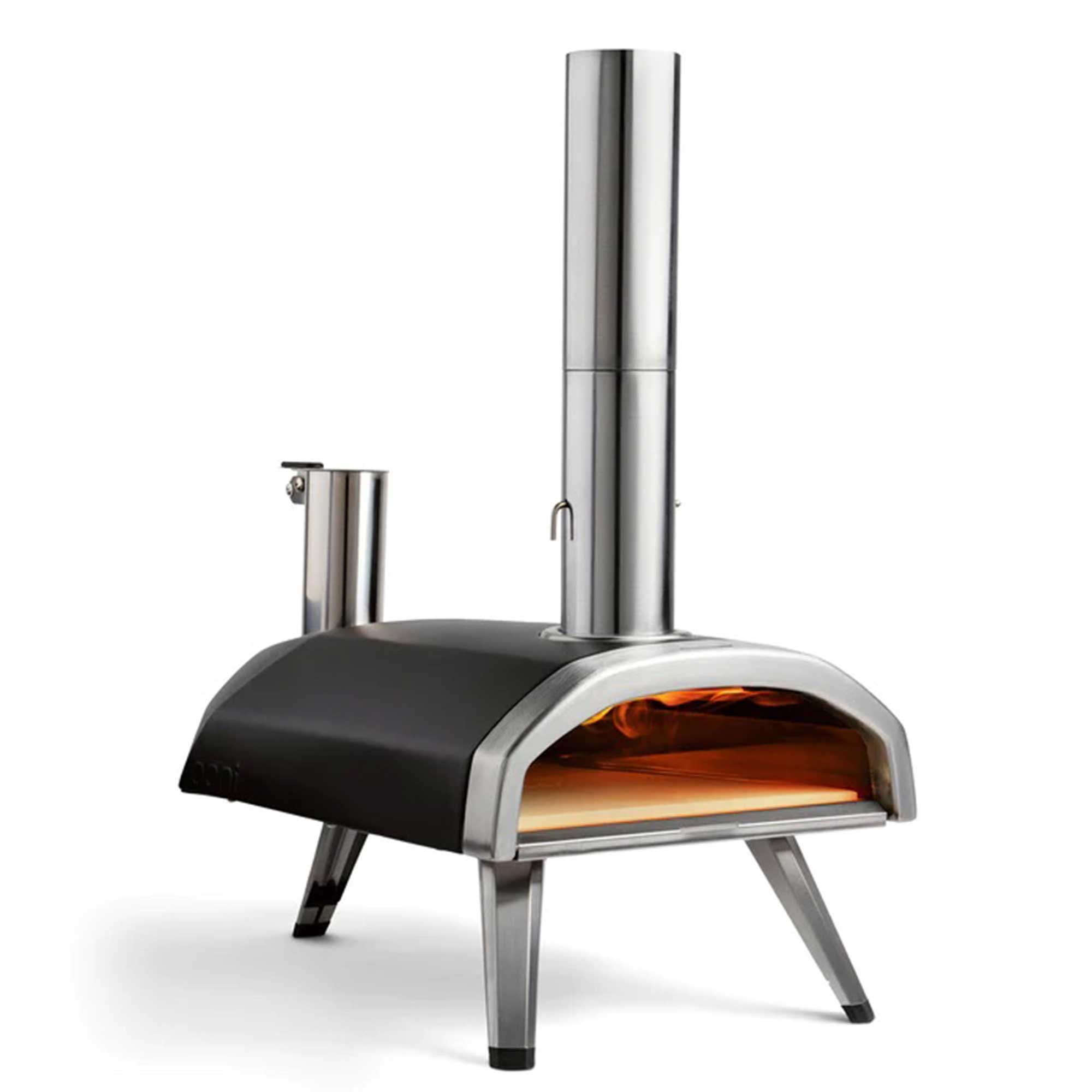
Fuelled by hardwood pellets for consistently high heat and low maintenance, this oven heats up to 950˚F (500˚C) in just 15 minutes, ready for cooking delicious 12in pizzas. And at only 22lbs (10kg), it's easily portable. We rated it 5 stars in our Ooni Fyra review.
What are the pros and cons of gas pizza ovens?
Cooking on gas is the other option when it comes to choosing the type of pizza oven for your yard.
Benefits of gas pizza ovens
Convenience is the name of the game for gas pizza ovens. 'Gas requires less maintenance throughout your cook,' explains Ooni. 'To control the temperature, you simply need to turn the control dial up or down.' Paul agrees: 'Gas is more simple to stay within a specific temperature range.'
Gas ovens heat quickly without much fuss, says Pam. It's also easier to get repeatable results, she adds, something especially great for professional bakers or beginners alike who are still mastering their technique. 'Gas-fired pizza ovens are also cheaper to use as they require less fuel than wood-fired ovens.'
Then there's the space issue. Typically, gas ovens are more compact than wood-fired ovens, says Paul: an important factor to consider if you have a small garden.
Cleaning a pizza oven is easier if you opt for gas, too – there's no ash to clear up, as Ooni mentions.
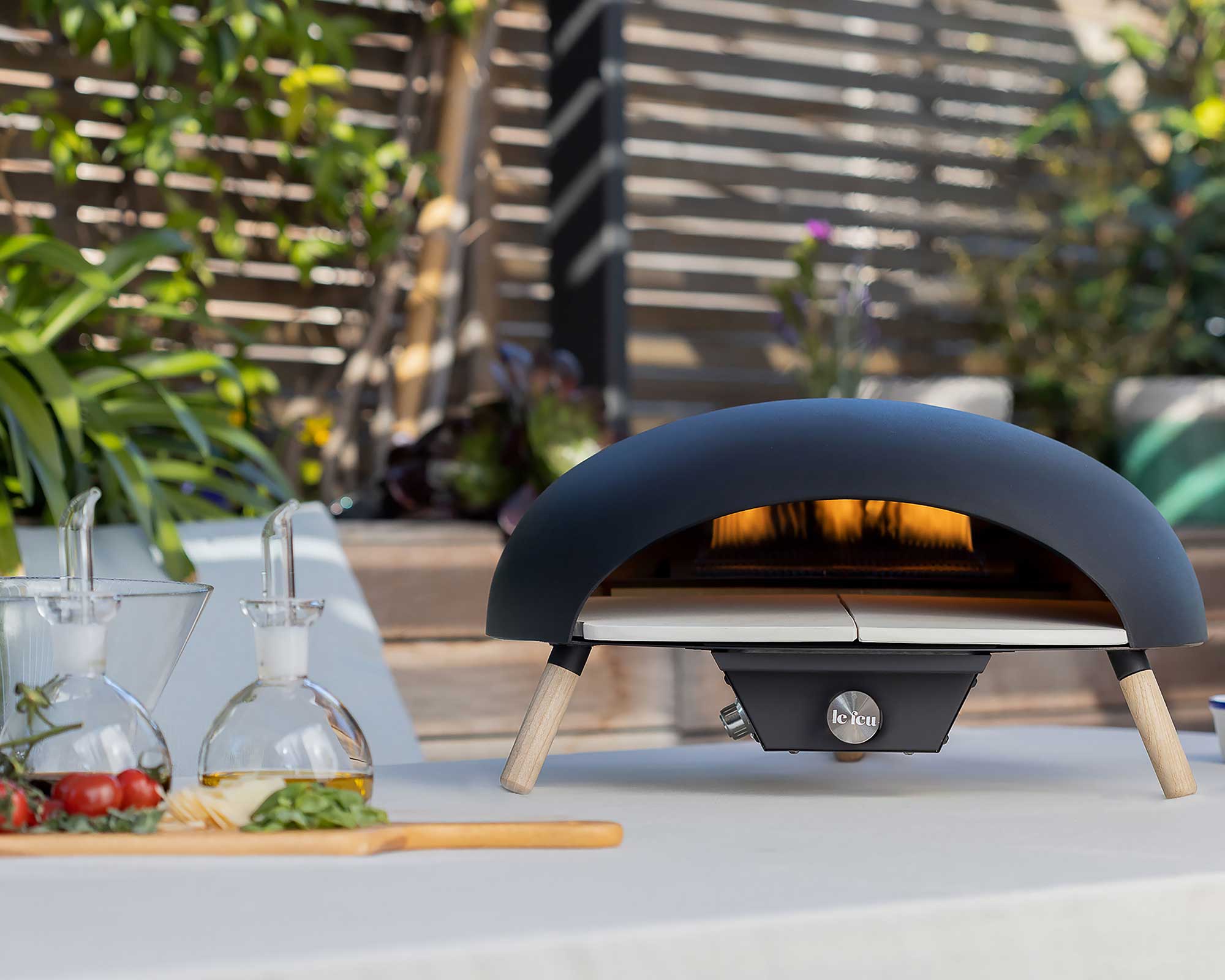
Drawbacks of gas pizza ovens
Shrey comments on how gas ovens can have longer cooking times in comparison to wood-fired ones, and that the heat can be inconsistent. Paul also comments on the latter, explaining how these ovens are often less insulated, which can cause temperature swings.
And, although there isn't any ash to clear up, you will still need to clean your pizza oven to keep it in good condition. 'Propane gas will form an unsightly black soot on the roof of the oven and often the front of the oven,' says Paul.
Then, as mentioned, there's that smokey taste you get with wood-fired pizza ovens that's so well-loved. 'It's true that gas ovens lack some of the depth of flavor achieved by wood-burning stoves,' Pam says. 'However, with a few tweaks, such as adding smoke chips or adjusting baking speeds, this difference can become rather negligible.'
Shop gas pizza ovens:
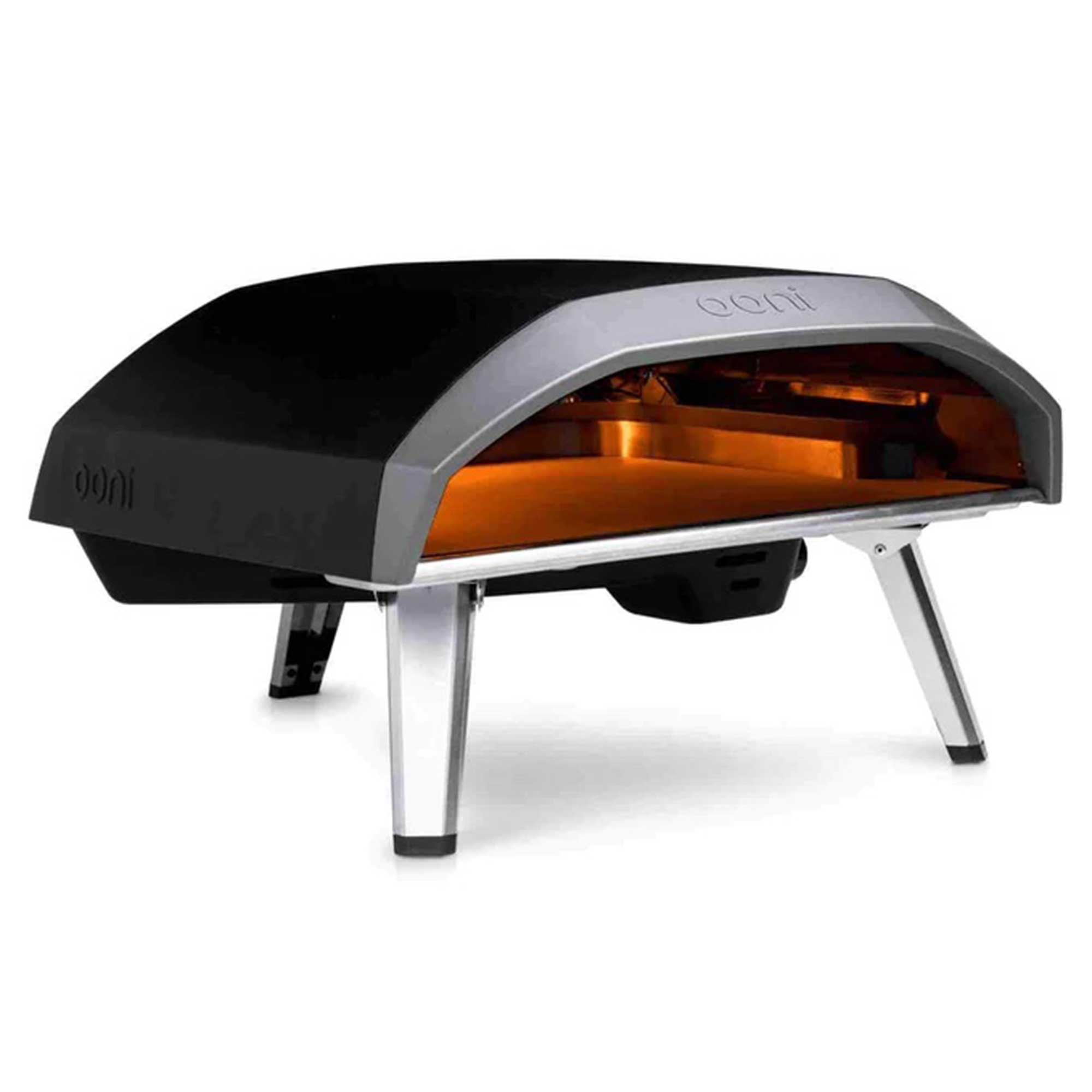
This gas oven from a leading brand can run on propane or natural gas. Heating to 950˚F (500˚C), it can cook pizzas in as little as 60 seconds once preheated. With the ample cooking area, there's space for cooking 16in pizzas, as well as meat joints and more.
Gas vs wood-fired pizza ovens – which is best?
If you're looking for ease, then gas pizza ovens are the way forward. The speedy heat-up time and ability to easily adjust temperatures while cooking mean they're perfect for hosting a no-fuss outdoor pizza party. As mentioned, their usually-compact size and lightweight design means they're convenient for urban living, too – just pop it on a pizza oven table on your patio or deck when you fancy cooking up a feast.
But, for some, cooking on gas just doesn't have that rustic appeal of using firewood – and this is enough to overlook the expensive fuel, messy ash, and trickier technique. 'Wood-fired cooking is a true art – it takes time, and you’ll have to continuously manage the fire throughout the night, but there’s something so magical in the whole experience,' says the experts at Gozney. In fact, cooking over wood can be a satisfying challenge to master. And you can be sure that the results – albeit, perhaps, eventual – will capture that delicious, authentic taste.
Still can't decide? 'A lot of pizza ovens now come in a dual-fuel variation, so the good news is you don’t need to pick between the two when deciding which oven to buy,' says the experts at Gozney. Their Roccbox is a dual-fuel model with two interchangeable gas and wood burners – you simply twist off one and reattach the other to switch between gas and wood-fired cooking, they explain. 'Our latest pizza oven, the Gozney Dome, goes one step further,' they add. 'It has a built-in dual fuel burner system so you can effortlessly switch fuel types without having to attach a different burner.'

The garden was always a big part of Holly's life growing up, as was the surrounding New Forest where she lived. Her appreciation for the great outdoors has only grown since then. She's been an allotment keeper, a professional gardener, and a botanical illustrator – plants are her passion.
